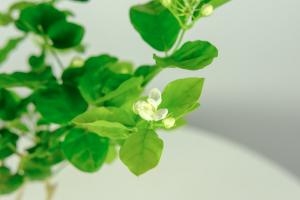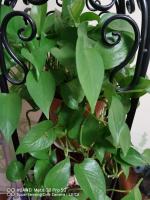What Plant Cell Carries Water Up?
Plant cells are the basic units of life in a plant's body. They have specific functions that enable plants to survive, grow, and reproduce. One of the most important functions of plant cells is carrying water up from the roots to the rest of the plant. But which plant cell does this job? Let's find out!
The Xylem: A Plant's Plumbing System
The plant's water-carrying system is called the xylem. The xylem is like a plumbing system that connects the plant's roots to its leaves, stems, and flowers. It consists of a network of tubes made up of specialized cells that transport water and minerals from the roots to the rest of the plant.
The xylem cells are arranged in long columns or tubes that extend from the roots to the leaves. There are two types of cells found in the xylem: tracheids and vessel elements. Both types of cells are dead at maturity and form continuous tubes through which water can flow.
Tracheids: The First Transporters
Tracheids are the main cells that carry water and nutrients up from the roots. They are found in all vascular plants, from ferns to conifers. Tracheids are long, thin cells with tapered ends that fit together like puzzle pieces to form continuous tubes. They have walls thickened with a material called lignin, which makes them rigid and strong.
Tracheids also have small pits or openings in their walls that allow water to pass from one cell to another. These openings are called pits because they are not fully open like the pores in a sieve. Instead, they are narrow channels that allow water to flow through while still providing some support and structure.
Vessel Elements: The Fastest Water Carriers
Vessel elements are specialized cells that are only found in angiosperms, or flowering plants. They are wider and shorter than tracheids and can transport water much faster because they have fewer obstructions in their tubes. Vessel elements are also strengthened with lignin, but their walls are thinner and have perforations, or holes, in them that allow water to move freely and quickly.
Vessel elements are arranged end to end, forming continuous tubes that can extend for meters within a plant. They connect to the tracheids at their ends, forming a long chain of cells that extends from the roots to the leaves. Vessel elements also have pits in their walls, but they are much larger and less frequent than those found in tracheids.
The Role of Water in the Plant Body
Water is essential to plant growth and survival. It is the medium in which all chemical reactions take place, and it helps to maintain the right balance of nutrients and minerals in the plant's cells. Water also helps to transport nutrients and sugars from the leaves to the rest of the plant.
When a plant is deprived of water, its cells start to shrink and lose turgor pressure, or the pressure that keeps them stiff and upright. This can cause the leaves to wilt and the plant to become dehydrated. If a plant is severely dehydrated, it may die.
Conclusion: It's a Team Effort
So which plant cell carries water up? The answer is both tracheids and vessel elements. These two types of cells work together to transport water and nutrients throughout the plant body. Tracheids are the main cells that carry water up from the roots, while vessel elements are specialized cells that transport water rapidly from the roots to the rest of the plant. Together, they form the xylem, a plumbing system that helps plants grow, thrive, and reproduce.

 how many times do yo...
how many times do yo... how many planted tre...
how many planted tre... how many pine trees ...
how many pine trees ... how many pecan trees...
how many pecan trees... how many plants comp...
how many plants comp... how many plants can ...
how many plants can ... how many plants and ...
how many plants and ... how many pepper plan...
how many pepper plan...































